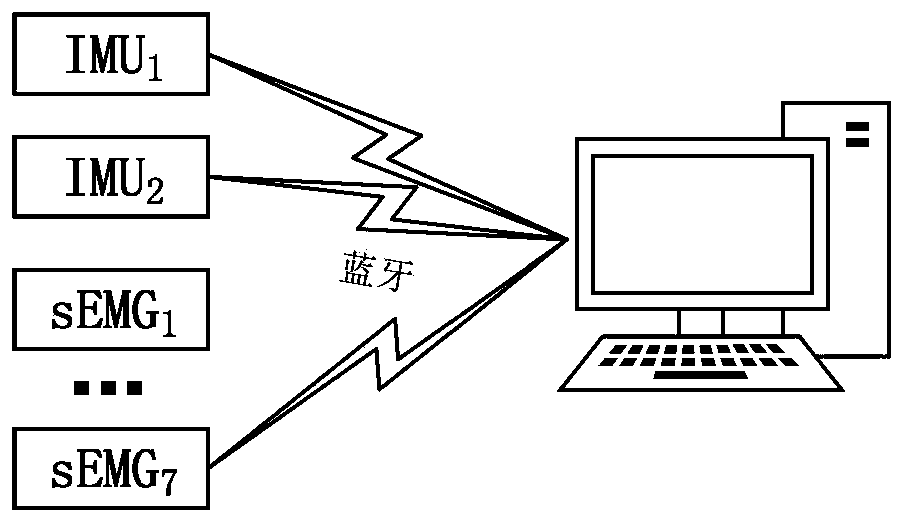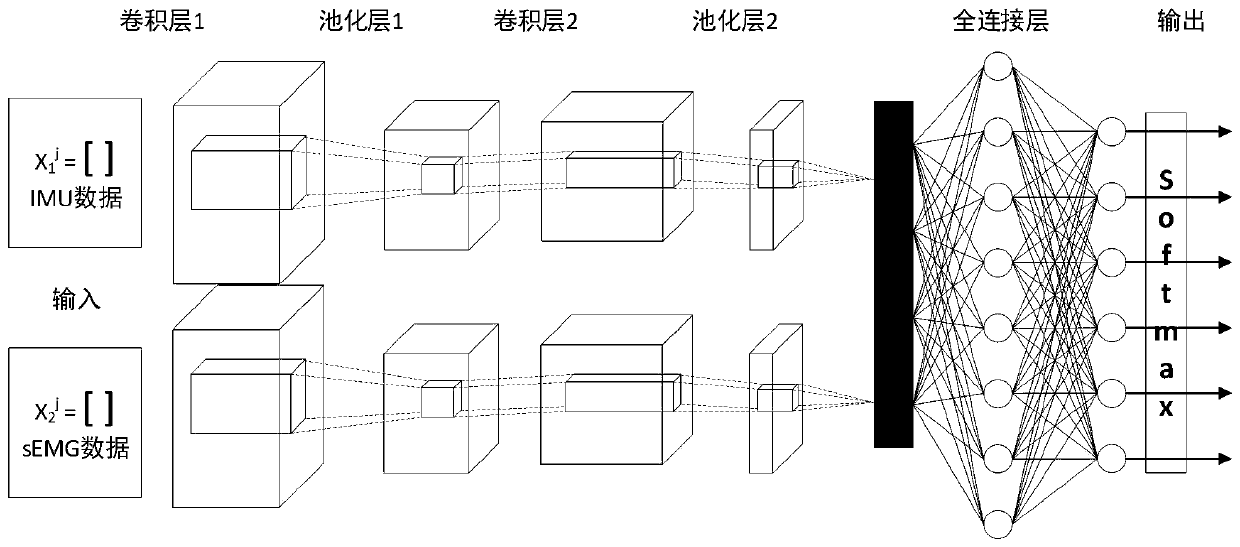Automatic evaluation method of upper limb motion function in stroke based on deep learning
A technology of motor function and deep learning, applied in medical science, sensors, diagnostic recording/measurement, etc., can solve problems such as insufficient feature extraction, achieve full feature extraction, improve accuracy, and avoid dependence
- Summary
- Abstract
- Description
- Claims
- Application Information
AI Technical Summary
Problems solved by technology
Method used
Image
Examples
Embodiment 1
[0094] After the above steps S1 and S2, 200 IMU and sEMG signal samples are collected, a deep learning model is constructed through S3 and the training process is completed to obtain the automatic evaluation deep learning model H. For subject A whose upper limb motor function level is unknown, the sensor signals of the shoulder touching process are collected through steps S1 and S2, Figure 4 (a) is a schematic diagram of the three-axis acceleration signal of the forearm IMU, Figure 4 (b) Schematic diagram of the sEMG signal of the biceps brachii. Input all the two signals collected into H, and the Brunnstrom staging result of A’s upper limb motor function is output as VI. Since A is a healthy subject in this example, the model automatically evaluates patient A correctly. There is no physician involved in the process, and only the subject himself or a family member assists in completing the sensor binding work.
PUM
 Login to View More
Login to View More Abstract
Description
Claims
Application Information
 Login to View More
Login to View More - Generate Ideas
- Intellectual Property
- Life Sciences
- Materials
- Tech Scout
- Unparalleled Data Quality
- Higher Quality Content
- 60% Fewer Hallucinations
Browse by: Latest US Patents, China's latest patents, Technical Efficacy Thesaurus, Application Domain, Technology Topic, Popular Technical Reports.
© 2025 PatSnap. All rights reserved.Legal|Privacy policy|Modern Slavery Act Transparency Statement|Sitemap|About US| Contact US: help@patsnap.com



